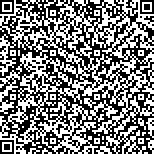| 摘要: |
| 扫海面积法因其操作简单、计算方便, 被广泛应用于渔业生物量评估工作中。但该方法需假设资源均匀分布, 若要提高生物量评估的准确性, 则须增加站位数量, 进而增加经费预算。本研究基于2006年8月和2007年1月、5月、11月在舟山渔场海域开展渔业资源底拖网调查所获得的多种经济蟹类数据资料, 模拟分析扫海面积法与机器学习模型(随机森林(RF)、梯度提升回归树模型(GBRT)、极限梯度提升(XGBoost))对舟山渔场海域三疣梭子蟹(Portunus trituberculatus)、双斑鲟(Charybdis bimaculata)、日本鲟(Charybdis japonica)、细点圆趾蟹(Ovalipes punctatus)4种主要经济蟹类生物量的对比评估效果。结果显示, 随着投入站点数目的减少, 在数据不集中、波动较大的秋、冬季节XGBoost方法对生物量的评估效果明显优于扫海面积法, 误差降低7.49%~21.34%; 而在较为均匀的春、夏两季, 扫海面积法与机器学习方法两者结果的差异不显著(P<0.05)。本研究以几种经济蟹类为例, 探索使用机器学习方法评估其生物量, 达到了提高评估准确性并节省资源调查成本的效果, 可在其他渔业资源种类生物量评估中推广应用。 |
| 关键词: 资源评估 扫海面积法 随机森林 梯度提升回归树 极限梯度提升回归 |
| DOI:10.11759/hykx20221127002 |
| 分类号:S932.5+2 |
| 基金项目:浙江省基础公益计划项目(LGN21C190009); 舟山市科技局项目(2022C41003) |
|
| Application of machine learning methods for estimating the biomass of economically important crabs in the Zhoushan fishery |
|
YANG Chun-hui, LI Xiao-dong, LIU Qi, WANG Ying-bin
|
|
College of Fisheries, Zhejiang Ocean University, Zhoushan 316022, China
|
| Abstract: |
| The swept area method is currently widely used in biomass assessment of fisheries because of its simplicity. However, this method assumes a uniform distribution of resources, and to improve the accuracy of biomass assessment, many stations must be sampled, which increases financial costs. In this study, we simulated and analyzed the biomass assessment process; further, we explored the use of machine learning methods to assess the biomass of economically important crab species Portunus trituberculatus, Charybdis bimaculata, Charybdis japonica, and Ovalipes punctatus in the Zhoushan fishing ground based on data obtained from bottom trawl surveys of fishery resources conducted in August 2006 and January, May, and November 2007. The results showed that with the reduction of the number of survey stations, the performance of the Extreme Gradient Boost method was better than that of the swept area method in autumn and winter when crabs were dispersed, and the estimated error decreased by 7.49%-21.34%. In spring and summer, when crabs were more evenly dispersed, there was no significant difference between the estimated biomass obtained using the swept area method and machine learning methods (P < 0.05). We conclude that the machine learning methods improve the accuracy of assessment and save the cost of resource surveys, suggesting that they can be used in the biomass assessment of other fishery resource species. |
| Key words: stock assessment swept area method random forest gradient lifting regression tree extreme gradient boosting |
